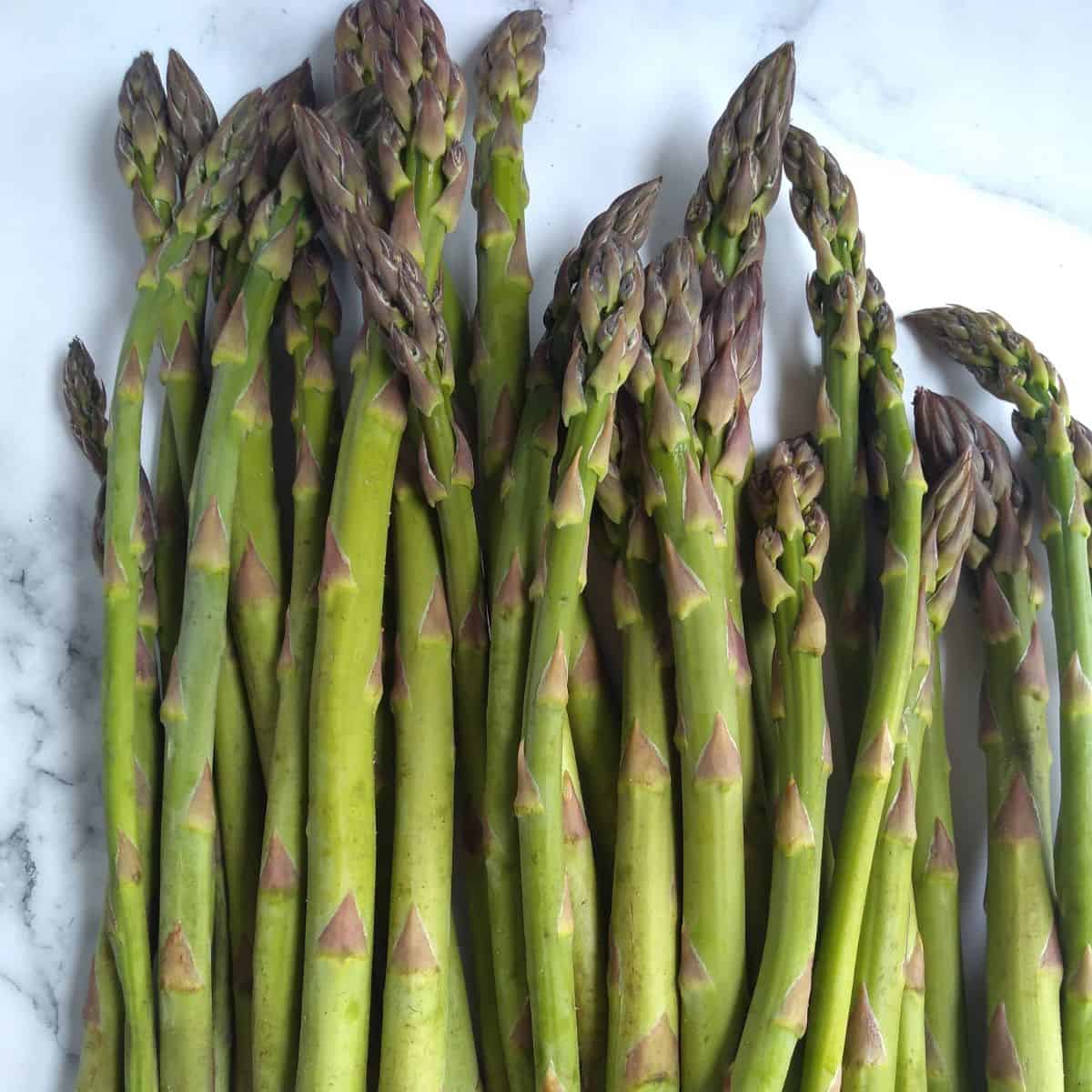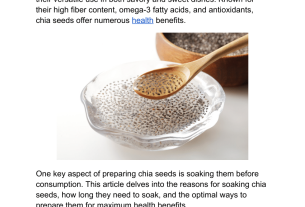Are you tired of biting into a wilted, flavorless stalk of asparagus?
Wondering if that bunch in your refrigerator is still good to eat?
Asparagus might seem like a simple vegetable to choose and store, but there are certain telltale signs that can help you determine its freshness.
In this guide, we’ll explore how to tell if asparagus is bad and share some tips on selecting, storing, and even freezing this vibrant green vegetable.
Say goodbye to disappointing meals and hello to delicious, perfectly cooked asparagus every time.
how to tell if asparagus is bad
To tell if asparagus is bad, check for soft, mushy, limp, or dull-colored stems.
The tips may also turn black and become completely mushy.
Look out for a foul smell and visible signs of mold.
Avoid bunches with slimy tops or limp, dull, or wrinkled stems.
Key Points:
- Check for soft, mushy, limp, or dull-colored stems
- Look out for blackened and mushy tips
- Pay attention to a foul smell and visible signs of mold
- Avoid bunches with slimy tops
- Avoid asparagus with limp, dull, or wrinkled stems
- Overall, asparagus that exhibits any of these signs should be considered bad.
how to tell if asparagus is bad – Watch Video


Pro Tips:
1. Asparagus spears that have a strong, unpleasant odor are likely spoiled. Fresh asparagus should have a slightly sweet and earthy aroma.
2. If the asparagus spears are excessively slimy or have a slimy appearance, it is a clear sign that they have gone bad and should not be consumed.
3. Another way to tell if asparagus is no longer fresh is by inspecting the color. Fresh asparagus should have vibrant green or purple hues, but if it appears dull or has turned yellowish, it is an indication of spoilage.
4. When examining the tips of the asparagus, if they appear mushy, discolored, or darkened, it is a definite sign that the vegetable is past its prime and should be discarded.
5. If you notice any signs of mold growth on the asparagus, such as white or black spots, it is unsafe to consume. Mold indicates that the asparagus has spoiled and is no longer suitable for consumption.
Signs Of Bad Asparagus
When it comes to asparagus, freshness is key. To determine if your asparagus has gone bad, there are several signs you should look out for.
Firstly, inspect the texture of the asparagus. If it feels soft, mushy, or limp, it is likely past its prime. Similarly, if the stems have turned dull-colored and limp, it is a clear indication of spoilage.
These changes in texture are often accompanied by a loss of flavor and nutritional value. Hence, it is best to avoid consuming asparagus that exhibits these characteristics.
To summarize, here are the signs of bad asparagus:
- Soft, mushy, or limp texture
- Dull-colored and limp stems
Remember to always prioritize fresh asparagus to enjoy its delicious taste and nutritional benefits.
“Freshness is key when it comes to asparagus.”
Soft And Limp Asparagus
One of the most noticeable signs of bad asparagus is its softness and limpness. When asparagus starts to go bad, it loses its firmness and becomes pliable to the touch. This change is due to the breakdown of cell walls and the loss of water content within the vegetable. As a result, the asparagus will no longer have the same crispness and freshness that it once had. If you find asparagus with these characteristics, it is best to discard it and opt for fresher options.
- Softness and limpness are signs of bad asparagus.
- Loss of firmness is caused by the breakdown of cell walls and loss of water content.
- Bad asparagus lacks crispness and freshness.
- Discard bad asparagus and choose fresher options.
“One of the most noticeable signs of bad asparagus is its softness and limpness.”
Black Tips And Mushy Asparagus
Another visual cue of spoiled asparagus is the presence of black tips and a mushy texture. As asparagus ages, the tips tend to darken and become slimy, eventually turning black. This is a clear indication that the asparagus has begun to decompose. Additionally, when you touch the asparagus, it may feel excessively soft and squishy, indicating a loss of structural integrity.
Avoid consuming asparagus with black tips and a mushy texture as it may cause stomach discomfort or food poisoning.
Important points to note:
- Spoiled asparagus can be identified by the presence of black tips and a mushy texture.
- Asparagus that has turned black has started to decompose.
- Soft and squishy asparagus indicates a loss of structural integrity.
Mold And Foul Smell On Asparagus
Mold growth and a foul smell are strong indicators that asparagus has gone bad. Inspect the asparagus carefully for any visible signs of mold, which can appear as white or green patches. Mold not only alters the taste and texture of the asparagus but also poses health risks when consumed. In addition, if you notice a pungent or unpleasant odor emanating from the vegetable, it is a clear indication of spoilage.
- Mold growth (white or green patches)
- Foul smell
These are signs that the asparagus is no longer safe to eat.
Avoid Slimy And Dull Asparagus
When selecting asparagus, it is important to pay attention to certain signs of freshness and quality. Avoid bunches with slimy tops or stems that appear limp, dull, or wrinkled. Sliminess can indicate the presence of bacteria or fungi, which signifies decomposition. Limpness and dullness are early signs of moisture loss and spoilage. It is recommended to choose asparagus that has a vibrant green color, firm stems, and a fresh appearance.
To summarize:
- Avoid slimy tops or limp, dull, and wrinkled stems
- Look for vibrant green color
- Choose asparagus with firm stems
- Opt for a fresh appearance
Characteristics Of Fresh Asparagus
To ensure you select the freshest asparagus, there are a few characteristics you should look out for. Fresh asparagus should have firm, bright green stems that stand straight without drooping. The texture of the asparagus should be smooth when touched, without any signs of softness or limpness. Additionally, it is ideal to choose asparagus with similarly sized stalks, as this ensures even cooking and consistency in flavor.
Firm And Bright Green Stems
When examining asparagus for freshness, pay close attention to the firmness of the stems. Fresh asparagus should have crisp, firm stems that indicate its optimal quality. Avoid selecting asparagus with soft or flexible stems, as these are likely past their prime. Additionally, the stems should exhibit a vibrant green color, showcasing the vegetable’s freshness.
Smooth Texture Of Asparagus
The texture of asparagus is a crucial indicator of its quality. A fresh asparagus spear should have a smooth texture when touched, without any signs of mushiness or shriveling. When you run your hand along the stem, it should feel firm and slightly rigid. Avoid asparagus that feels slimy or rubbery, as these are clear signs of spoilage.
- A fresh asparagus spear should have a smooth texture when touched
- No signs of mushiness or shriveling
- It should feel firm and slightly rigid when running your hand along the stem
- Avoid slimy or rubbery asparagus, as these indicate spoilage.
Similarly Sized Stalks Preferred
Choosing stalks that are similar in size has its advantages when cooking asparagus.
When all the stalks are relatively equal in thickness, they will cook more evenly, ensuring a consistent texture and flavor throughout your dish.
It also makes for a visually appealing presentation.
While slightly thicker or thinner stalks can still be enjoyed, a bunch with extreme variations in size may result in uneven cooking.
Proper Storage Techniques For Asparagus
To prolong the shelf life of asparagus, proper storage techniques are essential. One method is to keep asparagus upright in a mason jar with an inch of water, covering the tops loosely with a plastic bag. This helps maintain the freshness and hydration of the vegetable. Alternatively, you can wrap the stems with a damp paper towel and store them in a plastic bag or produce bag in the crisper drawer of your refrigerator. With either technique, properly stored asparagus can last for four to five days or three to four days, respectively.
Additional Information On Freezing And Storing Asparagus
If you have excess asparagus that you want to preserve, freezing can be a great option. However, there are some important considerations to keep in mind:
- To prevent the asparagus from becoming mushy during storage, ensure it remains damp by flipping the bag over daily.
- If freezing asparagus, it is generally recommended to blanch it briefly beforehand. Blanching helps maintain its color and crisp texture, but it is not necessary for freezing.
- When freezing asparagus, you can either cut it into 1-inch pieces or freeze it whole, depending on your preference.
- Frozen asparagus should be stored in a freezer-safe bag or container and can last for up to a year in the freezer.
- Cooked asparagus can also be preserved by storing it in an airtight container in the refrigerator for three to four days. However, the texture of cooked asparagus will become less crisp each day and may become very soft by the last day.
- If you prefer to freeze cooked asparagus, it is best to do so promptly. Store the cooked spears in a freezer-safe bag or container and keep them in the freezer for up to a year.
By following proper storage techniques and being mindful of the signs of spoilage, you can enjoy fresh asparagus for longer periods and make the most of this delicious and nutritious vegetable.

You may need to know these questions about how to tell if asparagus is bad
How long does asparagus last in refrigerator?
Fresh asparagus typically stays fresh in the refrigerator for about three to five days. To extend its shelf life, consider refrigerating it in a glass jar with a small amount of water, which can help it stay fresh for up to ten days. Simply discard the asparagus when the ends start to turn dark green and mushy to ensure that you’re still enjoying its optimal freshness.
Is it safe to cook asparagus that’s about to go bad?
When asparagus starts to go bad and becomes soft or mushy, it is not safe to cook or consume. The texture change is a clear indicator that the asparagus has expired. Eating expired asparagus can lead to a negative eating experience and potential foodborne illnesses. It is always best to discard any asparagus that has reached this stage to prioritize your health and enjoyment of the meal.
Does bad asparagus smell?
Yes, bad asparagus can indeed emit an unpleasant odor. When the asparagus tips wilt, they will turn soft and black, producing a slightly sulfurous smell. It is important to inspect the stalks carefully for mold and dark spots as well, as these can also indicate spoilage.
Can you eat asparagus after 5 days?
Yes, asparagus can still be consumed after being refrigerated for five days using the preservation method mentioned. By storing asparagus in a jar with water and loosely covering it with a plastic bag, you can extend its freshness and enjoy it even after five days. This method helps to retain its moisture and prevent it from wilting or drying out, ensuring that the asparagus remains crisp and delicious enough to be included in your meals even after several days.
Reference source
https://www.tasteofhome.com/article/how-to-tell-if-asparagus-is-bad/
https://www.masterclass.com/articles/how-to-store-asparagus
https://www.foodchamps.org/how-long-does-asparagus-last/
https://www.youtube.com/watch?v=F_VqYqhTduA



